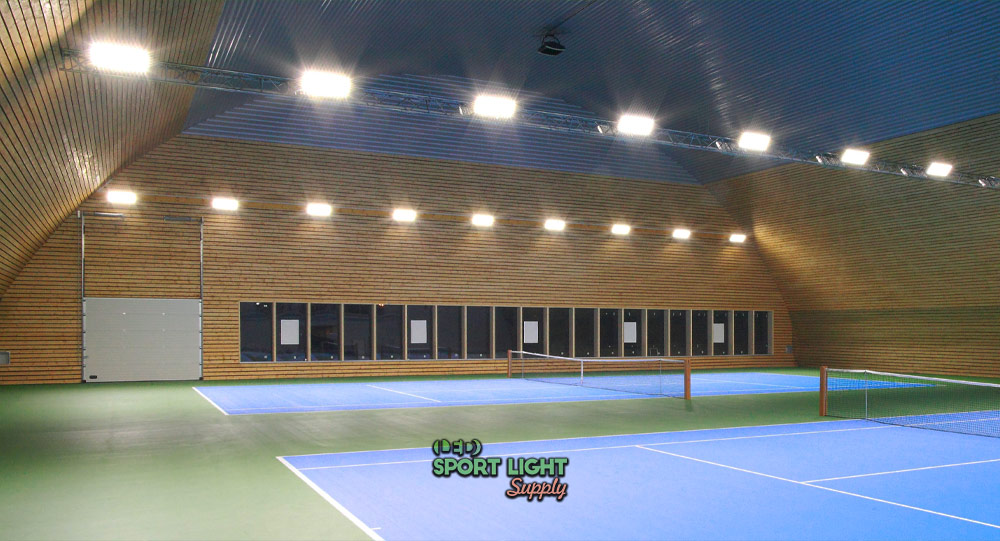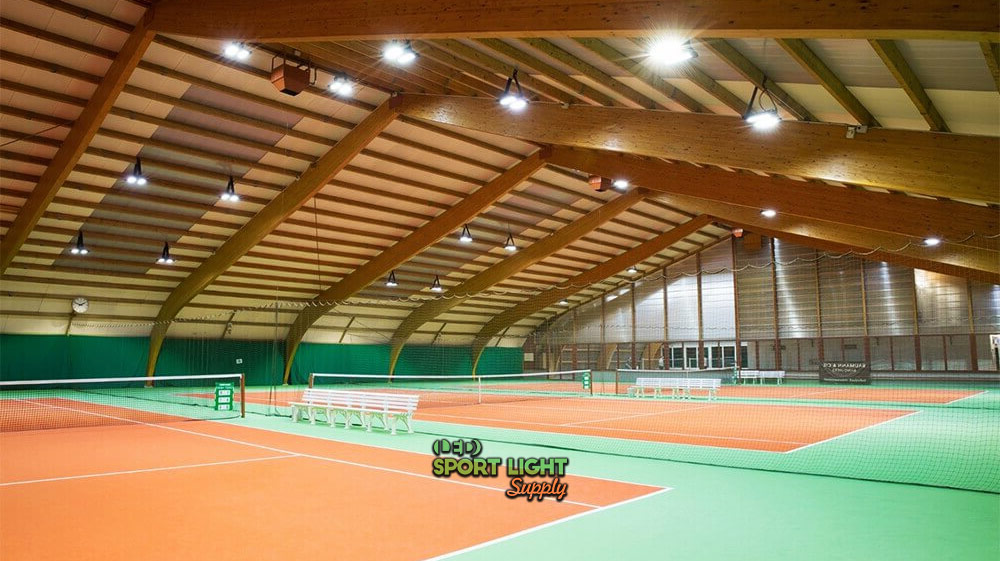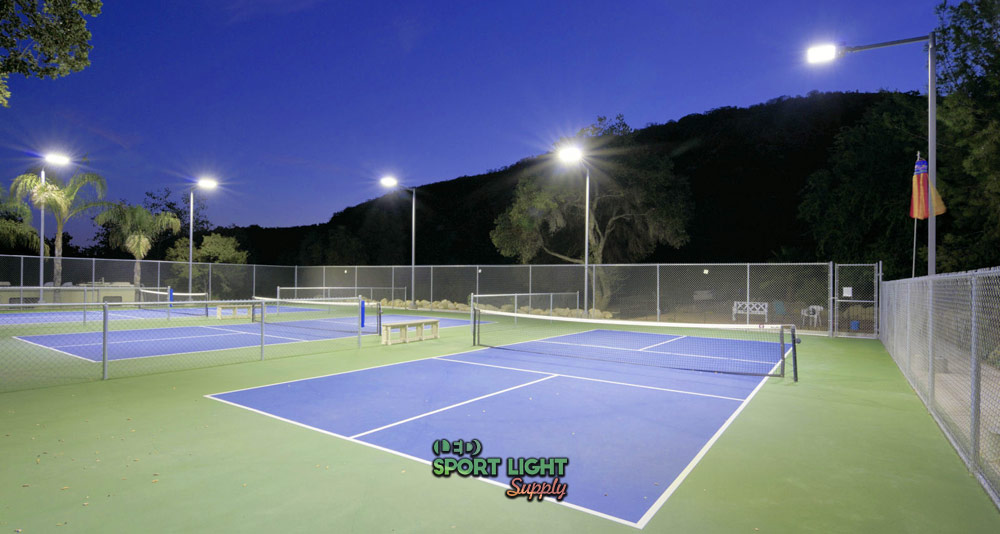Did you know that tennis courts have specific lighting requirements to ensure optimal visibility for both players and spectators? Adhering to these standards can significantly enhance the playing experience. If you’re unfamiliar with lighting requirements, understanding what is necessary can be overwhelming. This article provides comprehensive information on lighting specifications for both outdoor and indoor tennis courts, designed to help you make informed decisions.
Table of Contents
ToggleOutdoor and Indoor Tennis Court Lighting Specifications
When it comes to lighting for tennis courts, whether indoor or outdoor, adhering to specific lighting standards is crucial. These standards cover various aspects such as brightness, uniformity, glare, color temperature, and CRI (Color Rendering Index). Understanding and applying these standards ensures optimal visibility for both players and spectators, enhancing the overall tennis experience.
Brightness Level Requirements

Brightness is a key factor in tennis court lighting, defined by lux, which measures the amount of light per unit area. The required brightness levels vary depending on the court’s purpose and competition level.
| Class | Indoor Court Lux Requirement | Outdoor Court Lux Requirement |
|---|---|---|
| Class I | 750+ lux | 500+ lux |
| Class II | 500+ lux | 300+ lux |
| Class III | 300+ lux | 200+ lux |
Measuring Brightness
To measure the brightness level, a device called a lux meter is used. This device provides readings in lux, indicating how bright the court is.
Different classes of lighting standards are set for varying levels of tennis competitions:
| Class | Purpose |
|---|---|
| Class I | Designed for high-level tournaments such as ATP, Wimbledon, and the US Open. |
| Class II | Suitable for mid-level competitions, including tennis clubs or colleges. |
| Class III | Intended for recreational use or low-level competitions, such as residential or park courts. |
The brightness level increases with the level of competition. Before purchasing and installing lighting fixtures, it’s essential to determine the court’s primary use—whether for competition, training, or recreational purposes.
Lighting Uniformity

Uniformity in lighting describes how evenly light is distributed across the tennis court surface. High lighting uniformity means there are no significant bright or dim spots, creating a more comfortable environment for players and spectators.
Importance of Uniformity
Uniform lighting is crucial because uneven lighting can lead to discomfort for players. For instance, if one part of the court is much brighter than another, players may struggle with visibility, affecting their performance and experience.
| Class | Minimum Uniformity Ratio |
|---|---|
| Class I | 0.7+ |
| Class II | 0.5+ |
| Class III | Not specified |
Calculating Uniformity
Uniformity is calculated by comparing the minimum lux value to the average lux value. For example, if the minimum lux value is 300 and the average is 350, the uniformity ratio would be 300/350 = 0.86. This indicates a relatively high level of uniformity.
Glare

Glare is a critical factor in tennis court lighting, especially for international tournaments like the ATP and WTA events, where glare specifications are strictly enforced. Glare occurs when the brightness of the lights overwhelms the visual comfort of players and spectators, making it difficult to see the tennis ball or opponents.
Glare Specifications
For tennis courts, glare is measured using the Glare Rating (GR). The GR rating should be:
| Class | Glare Rating (GR) Specification |
|---|---|
| Class I | Less than 50 |
| Class II | Less than 50 |
| Class III | Less than 55 (for both indoor and outdoor settings) |
The GR rating can be calculated using lighting design software like DIALux. This rating helps ensure that the lighting does not create excessive discomfort or hinder visibility.
Reducing Glare
To minimize glare, consider the following strategies:
| Method | Description |
|---|---|
| Increasing Pole Height | Raising the height of the light poles increases the distance between players and lights, reducing glare. |
| Optimizing Pole Layout | Proper placement of poles, such as avoiding corners and placing them at the sides of the double alley, helps minimize direct glare. |
Assistance with Tennis Court Lighting
If you need further assistance with tennis court lighting, including glare reduction, we offer free consultations. Our experts can help you design a lighting system that meets all relevant specifications and provides optimal visibility for both players and spectators.
Color Temperature
Color temperature is an important aspect of tennis court lighting, affecting the overall ambiance and functionality of the court. It refers to the color of the light emitted by the fixtures, measured in Kelvins (K).
Understanding Color Temperature
| Color Temperature | Range | Description |
|---|---|---|
| Warm White Light | 2800 to 3500K | Creates a cozy, inviting atmosphere, suitable for residential courts or recreational play. Enhances comfort for casual games. |
| Cool White Light | Above 5000K | Provides a bright, invigorating effect, ideal for competitive play. Ensures high visibility and contrast for intense matches. |
Choosing the Right Color Temperature
For residential tennis courts or backyard setups, warm white lighting is preferable due to its soothing quality. In contrast, for competitive or professional tennis courts, a cooler white light with a color temperature of 4000K or higher is recommended. This choice ensures that the lighting supports the demands of high-stakes matches, enhancing the players’ ability to see and react effectively.
How to Read the Specification Sheet for Tennis Court Lights
When reviewing a catalog of sports lighting, you may encounter a variety of specifications. To make an informed decision about tennis court lighting, it’s crucial to understand which specifications are most important. Key factors to consider include power, lumen output, light source, beam angle, color temperature, and IP rating.
Power and Lumen
Lumen Output
Lumen is a critical specification as it indicates the brightness of the tennis court flood lights. Higher lumen values correspond to brighter lights. Typical tennis court lights range from 15,000 to 68,000 lumens, depending on the power and brand.
Power Consumption
Power consumption, measured in watts, affects energy efficiency. For example, if two lights emit the same amount of lumens but one consumes 1000 watts and the other 400 watts, the latter is more energy-efficient. Thus, when choosing tennis court lighting, it is important to compare both power consumption and lumen output to select the most efficient option.
Beam Angle
Beam angle determines how light is distributed. Common beam angles include 15°, 45°, 60°, and 90°:
| Beam Angle | Description |
|---|---|
| Smaller Beam Angles (15°, 45°) | Provide more concentrated light, suitable for higher pole installations. |
| Larger Beam Angles (60°, 90°) | Offer wider light distribution, ideal for lower poles or indoor settings. |
For outdoor courts with poles 6 to 8 meters high, a 45° beam angle is often appropriate. For shorter poles, a 60° or 90° angle may be better. For indoor tennis facilities, the choice between 60° and 90° depends on ceiling height and the number of fixtures.
Color Temperature
Color temperature affects the ambiance of the tennis court:
| Color Temperature | Range | Description |
|---|---|---|
| Warm White | 2800 to 3500K | Creates a cozy, yellowish light, suitable for residential courts. |
| Cool White | 5000 to 6500K | Provides a bright, invigorating light, ideal for professional and high-competition courts. |
Selecting the appropriate color temperature ensures the lighting meets the needs of the specific type of tennis court.
IP Rating
The IP (Ingress Protection) rating indicates the waterproof and dustproof capabilities of the lighting fixture. For outdoor tennis courts, a rating of IP65 or higher is recommended to protect against adverse weather conditions such as rain and snow. In regions prone to severe weather, consider fixtures with an IP67 rating for added protection.
Conclusion
Understanding the key specifications of tennis court lighting—such as lumen output, power consumption, beam angle, color temperature, and IP rating—ensures you select the most suitable fixtures for your needs. By carefully considering these factors, you can achieve optimal brightness, energy efficiency, and durability for both indoor and outdoor tennis courts. For personalized advice and free consultations, feel free to reach out to us. We’re here to help you make informed decisions and ensure your tennis court lighting meets all your requirements.
